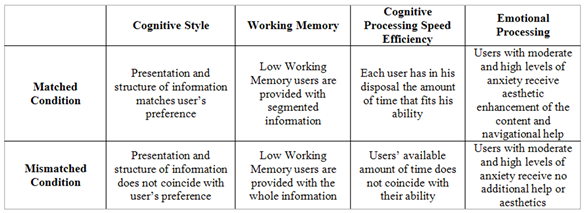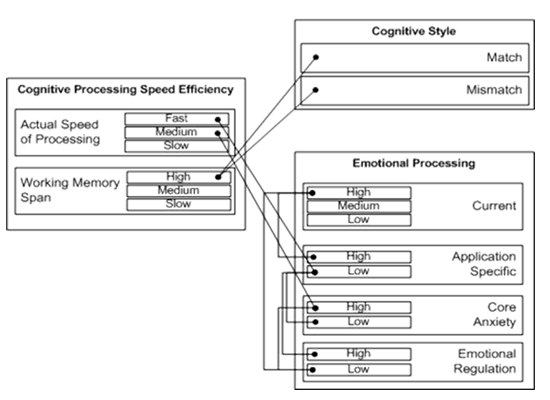evaluation of InteliWeb in eLearning context
scientific results / evaluation of InteliWeb eLearning
Main Hypothesis
- Are the cognitive and emotional parameters of our model significantly important
in the context of an educational hypermedia application?
- Does matching the presentation and structure of the information to Users’ Perceptual
Preferences increase academic performance?
- Is there any correlation among the factors of the User Perceptual Preference Characteristics
model?
Sampling and Procedure
All participants were students from the Universities of Athens and Cyprus;
Phase I sample: 138 students – Phase II sample: 82 students; 35% of
the participants were male and 65% were female, and their age varied from 17 to
22 with a mean age of 19;
The environment: An e-learning course on algorithms. The course subject was
chosen due to the fact that students of the departments where the experiment took
place had absolutely no experience on computer science, and traditionally perform
poorly.
Evaluation: The effect of matched and mismatched conditions; participants
took an online assessment test on the subject they were taught (algorithms). This
exam was taken as soon as the e-learning procedure ended, in order to control for
long-term memory decay effects. We expected that users in the matched condition,
both in phase I and phase II, would outperform those in the mismatched condition.

Results
The initial evaluative results were really encouraging for the future of our work
since we found that in many cases there is high positive correlation of matched
conditions with performance, as well as between the dimensions of the various factors
of our model.
Correlation within dimensions’ factors

More specifically, we have seen increased performance of students interacting and
learning in matched environments, with regards to:
- cognitive style (imager / verbalizer, wholist / analyst);
- actual cognitive speed of processing (time availability based on their type, fast
/ medium / slow);
- working memory span (complete or broken content provision depending if they had
high / medium / low capacity);
- emotional processing; more specifically, anxiety, turned out to be an equally important
factor: medium levels of anxiety are correlate with increased performance, while
aesthetics and extra navigation support helped significantly students that were
high anxious, in terms of performance.
